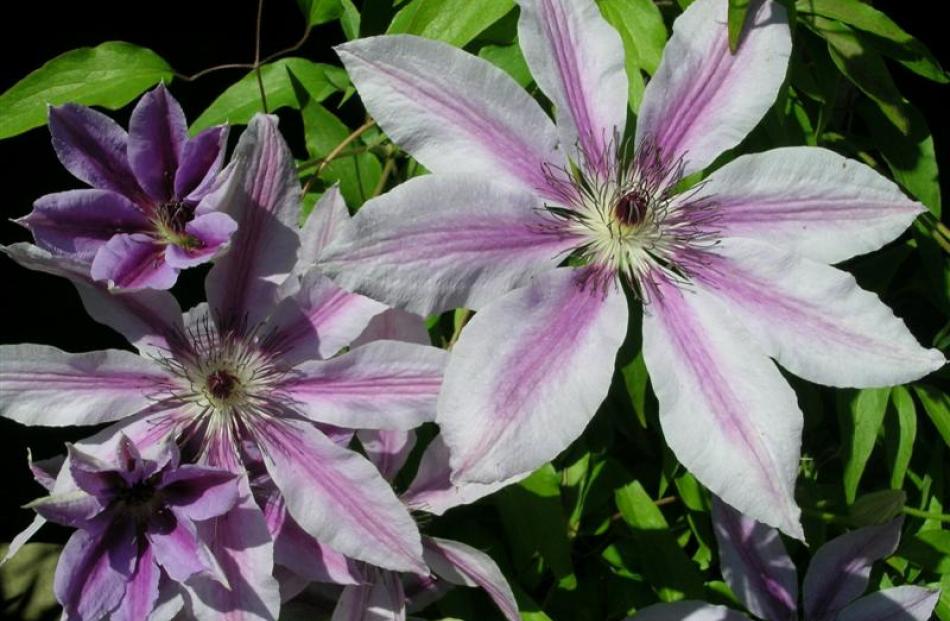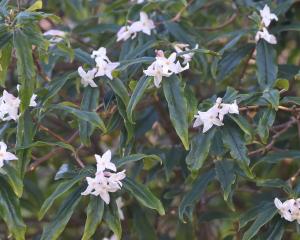Useful tips are important in good gardening. Gillian Vine gives her top 10 ideas.
In the middle of a conversation about something quite unrelated, I was asked for my top gardening tip.
My mind went blank and I mumbled something incomprehensible.
There are so many useful ideas - most of them not mine - that I'd have difficulty knowing where to start, so I went home and started making a list.
This is not in any order but are some tried and true suggestions.
1) Weed with two buckets.
Put weeds that will compost readily - chickweed, milk thistle and the like - into one bucket and into the other put things like docks, couch grass, convolvulus and dandelion roots that don't compost.
Keeping the two groups apart is practical, composting reduces the amount of rubbish in landfills and using buckets forces the gardener to get up off her knees to empty the containers, better for the body than getting up after an hour barely able to move.
If you find bits of broken china as you weed or dig, put them aside to make a mosaic when you've gathered enough fragments.
2) When working in the garden, if you plan to stop at, say, 4pm, then start packing up at 3.30pm.
This will give you time to get rid of the rubbish and clean tools before putting them away.
It's always a surprise to me at the end of a long session how much stuff I have taken to the far corner of the garden and how long it takes to clean up.
3) Get a working knowledge of how much lime common plants need or will tolerate (see "Love that lime" on this page).
How much lime depends on the acidity of the soil and it may be worth buying a soil-testing kit.
A tinge of green on bare soil usually indicates a lack of lime.
Don't overdo fertiliser. I found this out a few weeks ago when I knocked over a bag of a general fertiliser (a mix of nitrogen, phosphorus and potassium).
It spilled on the lawn and I scraped up as much as I could but the lawn overdosed and in a week there was a large bare patch.
Thankfully, the lawn is on the road to recovery.
Avoid using fresh manure, especially in the vegetable garden, or roots of parsnips, carrots and beetroot will fork instead of growing straight.
4) Check what grows in your area, especially if you're new to the locality.
Look over fences and ask neighbours what does best and what has flopped for them.
Join a garden club and you will get the best advice available from the friendly, helpful fellow members.
As Vita Sackville-West wrote, "One learns a lot from seeing other people's gardens".
5) Save money and the environment: scrub flower pots and reuse them.
Plastic pots are a by-product of the petroleum industry and as the international oil shortage becomes increasingly severe, the cost of items like flower pots will rise dramatically, pushing up the cost to wholesale nurseries, which will pass this on to garden centres and in turn to us.
A venture to recycle flower pots has started in the North Island but there is no indication yet that this initiative will reach the South.
If you live near a nursery, it may accept used pots.
6) Learn what weeds mean. A rich crop of chickweed and other annual weeds in spring generally indicates the soil is warm enough to consider seed-sowing.
7) Compost rubbish; don't leave it sitting around to become a haven for slaters, slugs and other pests.
Do not compost meat scraps, as they bring rats.
8) Grow plants to attract butterflies and bees: Scabiosa, swan plants and Buddleia bring butterflies, while honeybees adore Sedum.
Check information on sprays, as many are toxic to bees and other beneficial insects.
9) Don't compost the leaves of roses or rhododendrons or any diseased material.
Rake them up and get rid of them, ideally by burning if this is possible.
10) Practise crop rotation in the vege garden by dividing the garden into three sections and planting each with a different group of compatible plants every season.
It's actually quite fun to draw diagrams at this time of year and plan what to plant where and a heaven-sent excuse for sending off seed orders to mail-order companies.
Love that lime
• The measure of soil acidity is pH (potential hydrogen ions). A soil with a pH of less than 7.0 is acid, more than 7.0 is alkaline.
• Most soil nutrients are available to plants at a pH of about 6.5 but some plants, such as rhododendrons and ericas, which hate lime, need a more acid soil. Other plants, including clematis, prefer alkaline soils with plenty of lime.
• As well as the rhododendron family, leave the lime in the garden shed when planting potatoes, tomatoes, strawberries and camellias.
• Lime can be applied sparingly to beans, carrots, peas, rhubarb, pumpkins, daffodils and most other flowering bulbs.
• Cabbage, cauliflower, broccoli, gladioli and zinnia like a slightly more generous application of lime, as do roses, although for best results the latter are probably best treated with a special rose fertiliser.
• Greedy for lime are onions, lettuces, parsnips, spinach, beets, sweet peas, stock and an exception in bulbs - tulips.

















